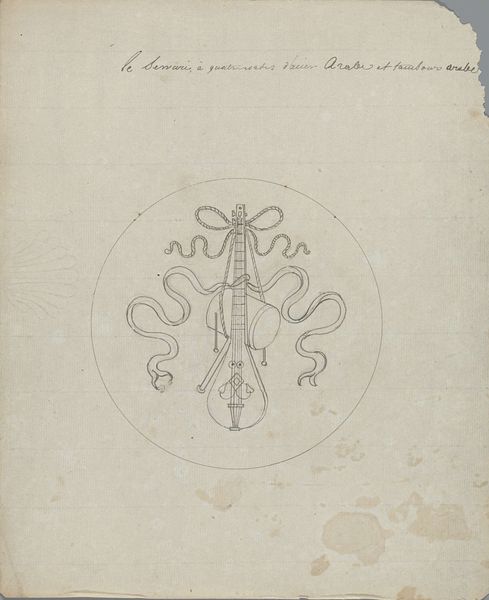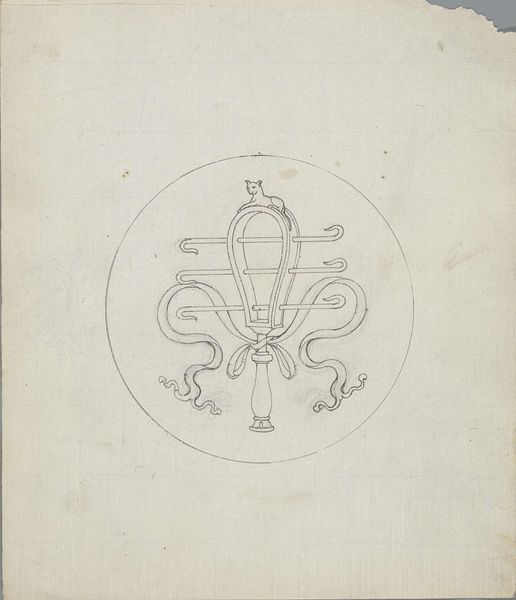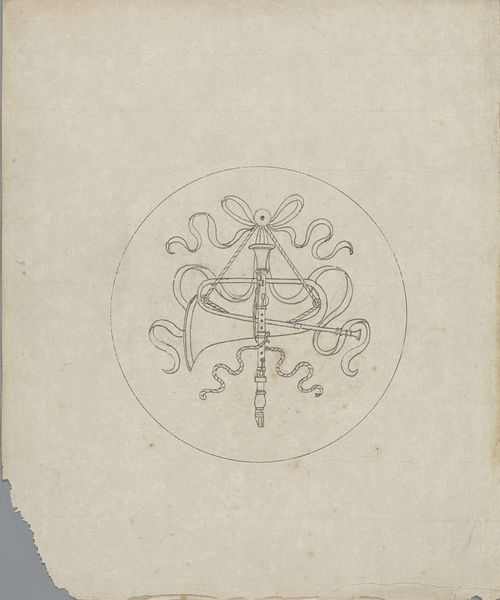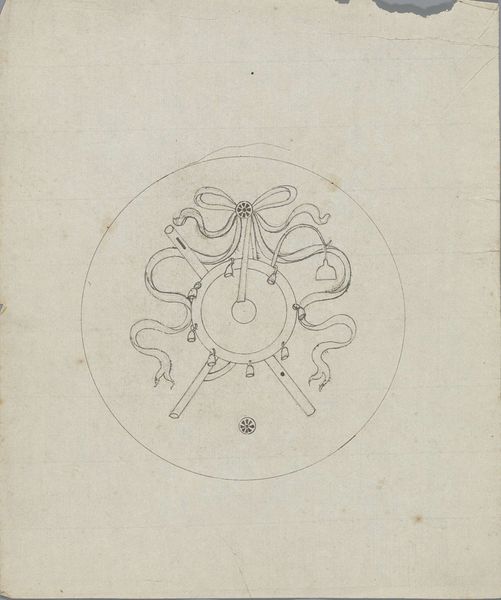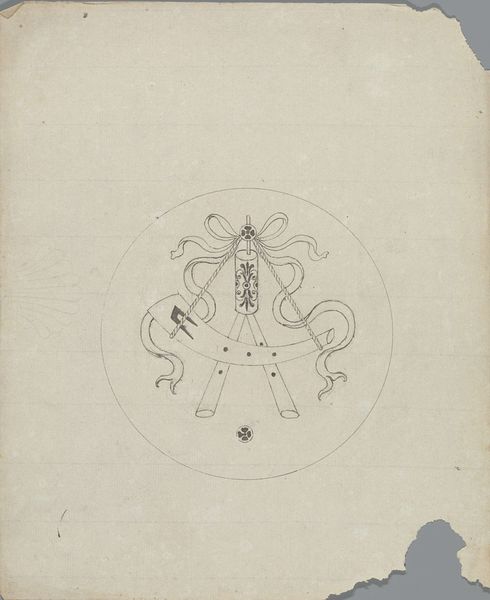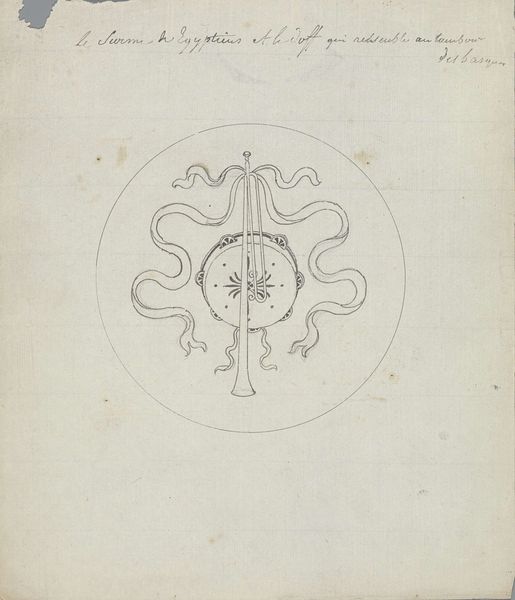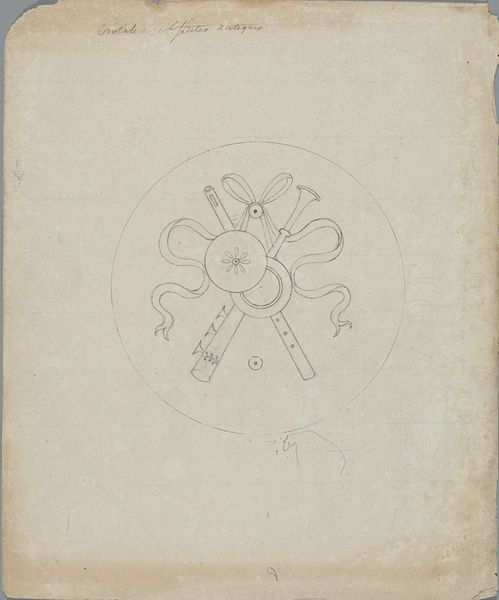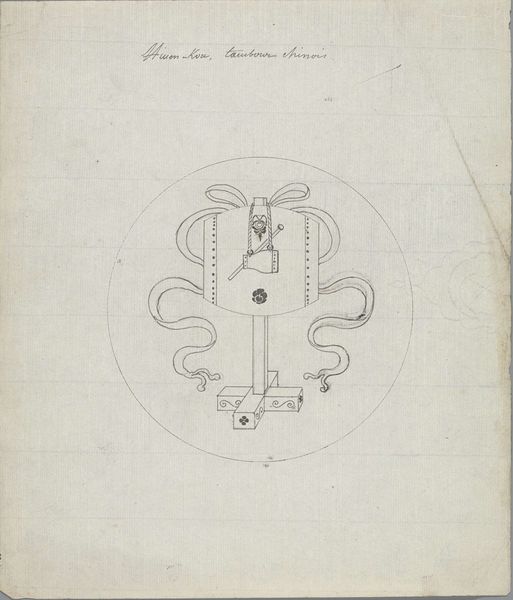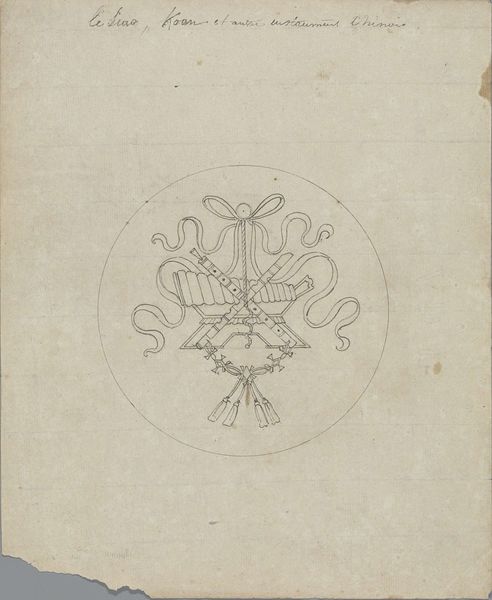
drawing, paper, pencil
#
drawing
#
aged paper
#
toned paper
#
light pencil work
#
blue ink drawing
#
quirky sketch
#
paper
#
personal sketchbook
#
geometric
#
ancient-mediterranean
#
pencil
#
ink colored
#
sketchbook drawing
#
watercolour illustration
#
sketchbook art
Dimensions: height 253 mm, width 208 mm, diameter 123 mm
Copyright: Rijks Museum: Open Domain
Editor: Here we have Pierre Félix van Doren's "Crotale d’Armenie," created before 1828. It's a pencil and ink drawing on paper, with the image surrounded by a circle. It looks like it could be an illustration from an archeological record, and something about the symmetry is quite pleasing. What do you see in this piece? Curator: It's fascinating how a simple sketch can carry so much cultural memory. What immediately strikes me is the centrality of the circle. Consider the circle's historical presence – from ancient sun worship to alchemical diagrams – how do you feel the artist uses that symbol here? Editor: Hmmm, it feels like a container for something precious, or perhaps a diagram of something meant to be studied. Curator: Precisely! The circle acts as a framing device, setting the stage for an object, in this case an instrument. Notice also the rendering of the titular Crotale—reminiscent of a sistrum, or even earlier percussion instruments associated with ritual. Does the pairing of musical instrument and symmetrical design perhaps suggest harmony to you? Editor: Yes, it definitely evokes a sense of harmony. And knowing it’s called a Crotale d’Armenie, gives it a specific cultural connection. It makes you think of the music of that region. Curator: Indeed, Armenia boasts a rich musical heritage. The choice of the subject reflects a connection to ancient traditions. The artist preserves cultural continuity, through these visual symbols, like musical instruments. Editor: It’s interesting how one small sketch can unlock so many layers of history and culture! Curator: Precisely! A symbol echoes through time and place. Hopefully the visitors can delve deeper and explore.
Comments
No comments
Be the first to comment and join the conversation on the ultimate creative platform.
